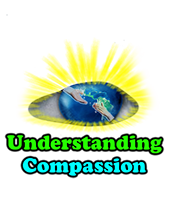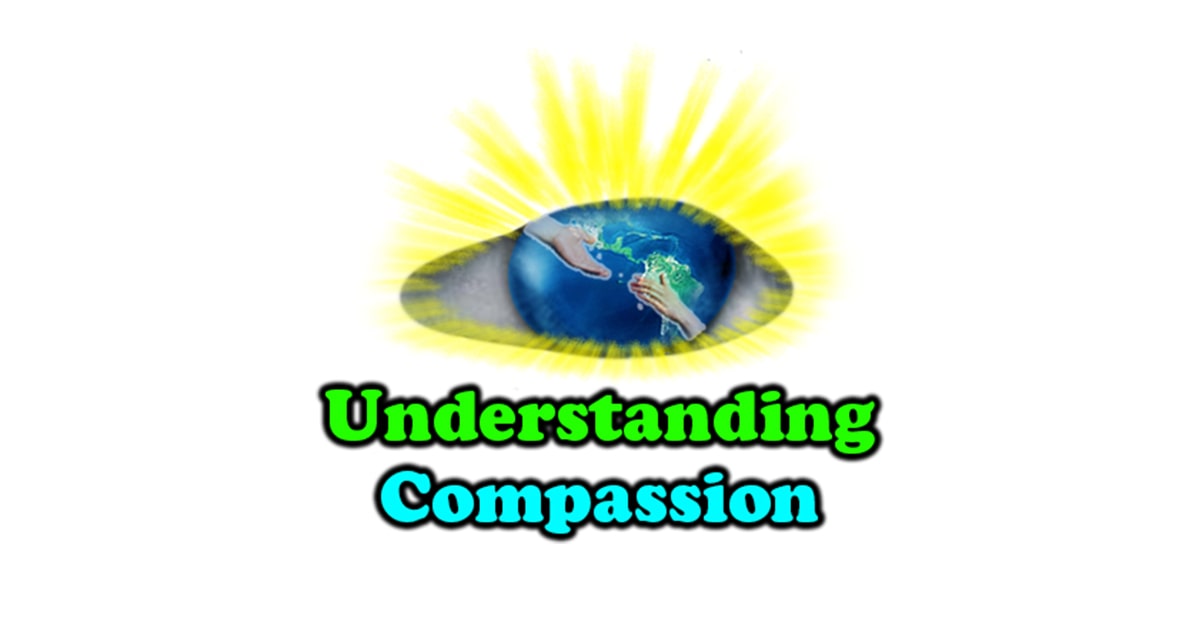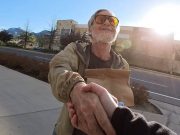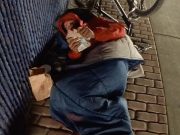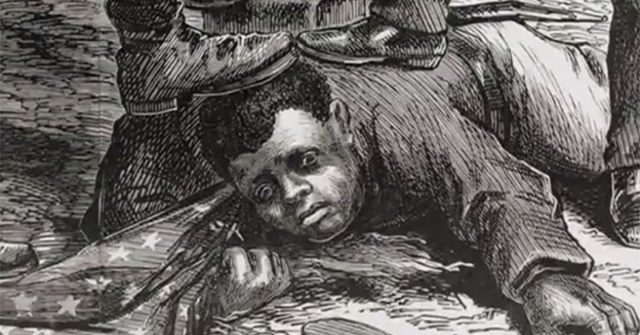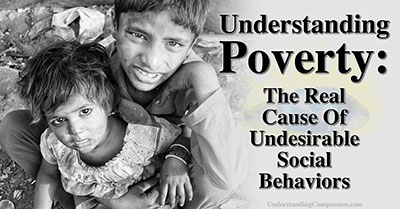The 5 Criteria Of An Openly Racist Society
Racism is defined as;
“Prejudice and discrimination, fortified by ideologies claiming that the differences between human groups of apparently divergent ancestry are immutable and have implications for social inclusion or ranking.”[1]
In his book Racism: a short history, Stanford University professor George Fredrickson outlines the five distinguishing features of an overtly racist society. According to Fredrickson, prejudice and discrimination have a histories that go back to the late middle ages, but racist principles were not fully codified into laws and seriously enforced by the state and public policies until the emergence of ‘overtly racist regimes.’[1]
There were three overtly racist regimes during the 20th century; white supremacy in the American South under Jim Crow laws from the 1890s to the 1960s, Apartheid’s use of white supremacy and institutionalized racial segregation in South Africa from 1948 until 1991, and the horrendous climax of antisemitism in Nazi Germany between 1933 and 1945.
Through his extensive research related to the history of racism, Fredrickson concluded that these five features exist within openly racist societies:
1. There is an official ideology that is explicitly racist
Those in authority proclaim insistently that the differences between the dominant group and the one that is being subordinated or eliminated are permanent and unbridgeable. Dissent from this ideology is dangerous and is likely to bring legal or extralegal reprisals, for racial egalitarianism is heresy in an overtly racist regime.[1]
2. Interracial marriage is outlawed
This sense of radical difference and alienation is most clearly and dramatically expressed in laws forbidding interracial marriage. The ideal is “race purity,” and the bans on interracial marriage reflect the maintenance or creation of a caste system based on the presumed racial differences.[1]
3. Social segregation is mandated by law
Social segregation is mandated by law and not merely the product of custom or private acts of discrimination that are tolerated by the state. The object is to bar all forms of contact that might imply equality between the segregators and the segregated.[1]
4. The targeted minority is excluded from holding public office
To the extent that the polity is formally democratic, outgroup members are excluded from holding public office or even exercising the franchise.[1]
5. The minority is deliberately kept in poverty
The access that they have to resources and economic opportunities is so limited that most of those in the stigmatized category are either kept in poverty or deliberately impoverished.[1]
While there have been many other racist societies, Fredrickson notes that nowhere else were the political and legal potentialities of racism so fully realized than in the following three overtly racist regimes:
The 3 Openly Racist Societies Of The 20th Century
1. The American South Under Jim Crow Laws (1890s to 1960s)

The time following the end of slavery was one of hate-filled brutality towards African Americans, largely expressed in the Jim Crow laws enacted in the American south between the 1890s and the 1960s. Long-held racist ideas permeated the American south; of blacks being inferior to whites, blacks being likened to and treated as animals, and that black people were fit only to be slaves. Desperately needed serious public education reform, teaching the truths, science and history related to ‘race,’ was never and has never been enacted in the south as a way to finally eliminate racism.
Sadistic Lynching Parties
Sadistic lynching parties took place, where angry groups of white men used terrorism to intimidate and murder black citizens.[1] Victims, even including U.S. Military veterans, were sometimes shot, burned alive or otherwise tortured and mutilated in the public events.[2] In some cases the mutilated body parts were even taken as mementos and souvenirs by the spectators.[3] The majority of lynching took place in the American south.
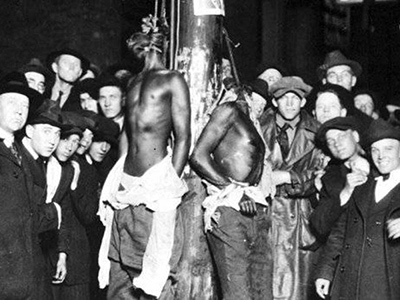

One-Sided Race Riots
The Atlanta race riots of 1906 were an attack of armed white groups against blacks in Atlanta, Georgia lasting for two days in September. Roughly 100 African Americans were brutally murdered. Some African Americans were hung from lampposts; others were shot, beaten or stabbed to death. They were pulled from street cars and attacked on the street; white mobs invaded black neighborhoods, destroying homes and businesses.[4] News of the terrible event spread internationally, being described as a “racial massacre of negroes.”[5]
Segregation
Jim Crow laws were state and local laws that enforced racial segregation in the Southern United States. Enacted by southern white legislatures after the 10 year period of reconstruction, these laws mandated ‘racial’ segregation in all public facilities in the southern states that once belonged to the Confederacy. Schools, public places, public transportation, communities, restrooms, restaurants, even drinking fountains were separated by blacks and whites up until 1965. Facilities for African Americans were consistently and drastically inferior and underfunded compared to those available for white Americans.
Anti-Miscegenation Laws
Miscegenation, more commonly known as ‘interracial’ marriage, was taboo and disapproved of in the U.S. for most of the 20th century. Prior to the 20th century, ‘interracial’ marriage was often considered a felony as laws prohibited the union between people of different ‘races.’ At the turn of the 20th century, many states criminalized cohabitation and sex between whites and blacks. In 1908, the state of Oklahoma banned marriage “between a person of African descent” and “any person not of African descent.” Similar laws were enacted in Louisiana in 1920, and in Maryland in 1935. It wasn’t until 1967 that the U.S. Supreme Court ruled in Loving vs. Virginia that anti-miscegenation laws were unconstitutional.[6]
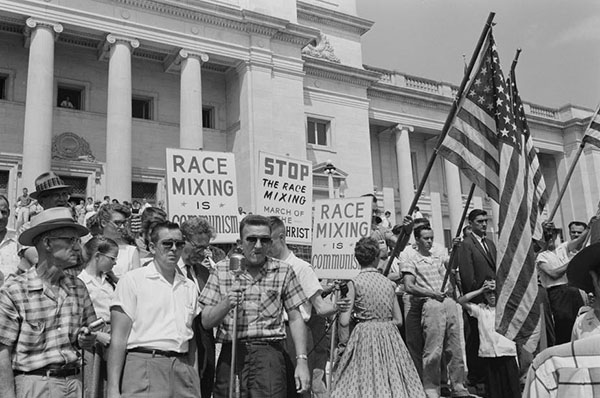
Eugenics
Eugenics in the United States was the idea and practice of allowing Americans of white skinned ancestry to have children, while limiting the procreation of minorities; namely black skinned Americans, the disabled, and the poor through forced sterilizations, strict immigration laws and anti-miscegenation laws. The eugenic idea of the time claimed that genetics were responsible for undesirable social behavior, and that by eliminating the labeled “undesirables” from society, that society would benefit. A large number of prisoners charged with “criminal behavior” were forcibly sterilized, and large percentages of those imprisoned by the prison system were African Americans. Hitler’s Nazi party of Germany later used the eugenics programs of the United States to further his own use of forced sterilizations and forced euthanasia.[7] It’s important to note that since the reemergence of eugenic related ideas in the 1880s, science has found that undesirable social behavior is not the result of genetics, but is actually the result of poverty.[7a]

Denying African Americans Their Right To Vote
Mississippi held a convention in 1890 seeking ways in which to defy the 15th Amendment, which guaranteed African Americans the right to vote. The white leaders were clear about their intentions, as the convention president stated, “We came here to exclude the Negro.”[8] As the 15th Amendment would not let them ban blacks from voting, they took other measures to suppress the black vote and to silence black voices. They setup an annual poll tax, which voters had to pay for two years before the election, and was expensive enough to have the majority of poor blacks be unable to pay.[9] They created literacy tests as another major obstruction to voting, which required a person seeking to register to vote to accurately and thoroughly read and explain a section of the state constitution to the county clerk, who just so often happened to be a white southerner trying to discourage the black vote.[9] The clerk then would tragically be able to decide if the person was “eligible” to vote. Almost immediately following the convention, 60% of black men who were ex-slaves, and who had been forbidden from learning how to read during slavery, were excluded from voting.[9]
This underhanded way of denying the right to vote then extended to all black men, as the clerk would pick the most difficult technical passages for African Americans to interpret, while giving simple sentences to whites.[9] To further guarantee white only votes, they enacted a “grandfather clause” that permitted automatic voting registration for anyone whose grandfather was qualified to vote before the Civil War; something that gave instant voting rights only to white citizens. Mississippi cut the percentage of black voting-age men registered to vote from more than 90% during reconstruction to less than 6% by 1892.[9]
Southern whites continued to enact various strategies and manipulations during the 20th century in order to suppress the votes of African Americans. The problem was so serious and undemocratic, that by 1965 a Voting Rights Act needed to be signed by then United States President Lyndon B. Johnson which expanded protections to African Americans and prohibited racial discrimination when voting. Many of the southern schemes to disenfranchise racial minorities and take away their right to vote; literacy tests and similar devices, were outlawed, and specific jurisdictions were banned from implementing any changes affecting voting without receiving pre-approval from the U.S. Attorney General or the U.S. District Court for D.C. stating that the changes do not discriminate against minorities.[10]
Frederick Douglass, a former slave and one of the most renowned abolitionist leaders, delivered one of the most powerful and moving speeches of the century, and spoke out against the gross injustice America had inflicted upon African Americans;
“What, to the American slave, is your 4th of July? I answer; a day that reveals to him, more than all other days in the year, the gross injustice and cruelty to which he is the constant victim. To him, your celebration is a sham; your boasted liberty, an unholy license; your national greatness, swelling vanity; your sound of rejoicing are empty and heartless; your denunciation of tyrants brass fronted impudence; your shout of liberty and equality, hollow mockery; your prayers and hymns, your sermons and thanks-givings, with all your religious parade and solemnity, are to him, mere bombast, fraud, deception, impiety, and hypocrisy — a thin veil to cover up crimes which would disgrace a nation of savages. There is not a nation on the earth guilty of practices more shocking and bloody than are the people of the United States, at this very hour.”[11]
2. Apartheid In South Africa (1940s to 1990s)
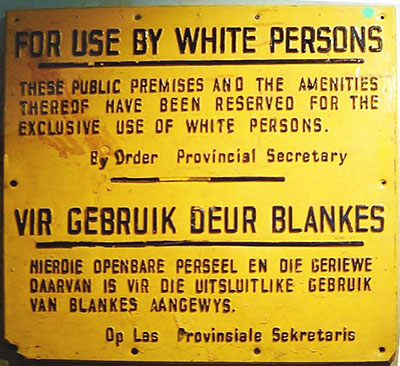
Apartheid, literally translated as “separateness,” was a South African system of institutionalized racial segregation and discrimination that existed in South Africa from 1948 until the 1990s. Apartheid was an authoritarian political culture based on white supremacy, which encouraged state repression of black, “colored” and Asian South Africans in order to benefit the country’s white minority population. The negative effects of Apartheid continue to exist to this day.
Racial Classification And Denial Of Voting Rights
Much of the ideology of South Africa during Apartheid was based on a white supremacy social ranking order, with whites at the top, and blacks on the bottom. Repression and denial of rights were common, and in 1936 the Cape Province removed all black Africans from the common voters roll.[1] The Population Registration Act of 1950 classified all South Africans into one of four ‘racial’ groups, which were based on appearance, skin color, socioeconomic status and cultural lifestyle. These four ‘racial’ groups included “black”, “white”, “coloured(mixed race)”, and “Indian”. The Abolition of Passes and Coordination of Documents Act unfairly required all black South Africans over the age of 16 to carry identification papers including a photograph and place of origin at all times.
Racial Segregation And Denial Of Resources
The Industrial Conciliation Act of 1924 excluded Blacks from membership of registered trade unions and prohibited the registration of Black trade unions. Laws enacted between 1924 to 1937 put the wages of whites at artificially high levels and gave them access to desirable positions of employment, while keeping Blacks out of high paying jobs, thus keeping them poor and in poverty. Higher education was restricted as the 1959 Extension of University Education Act made it illegal for black and “coloured” students to register at universities without the written permission of the Minister of Internal Affairs, thus segregating higher education and creating lasting economic disadvantages for black South Africans.
Where one lived was determined by racial classification.[12] From 1960 to 1983, 3.5 million non-white South Africans were removed from their homes and forced into segregated neighborhoods in an act that would become known as one of the largest mass removals in modern history.[13] The removals were intended to confine the black population to specific and designated “tribal homelands”, called bantustans, and then upon relocation, the South African government revoked citizenship of all black individuals.
Anti-Miscegenation Laws
The prohibition of Mixed Marriages Act of 1949 and the Immorality Act of 1950 were two South African laws enacted to make it illegal for most South African citizens to marry or pursue sexual relations across ‘racial’ lines.[12]
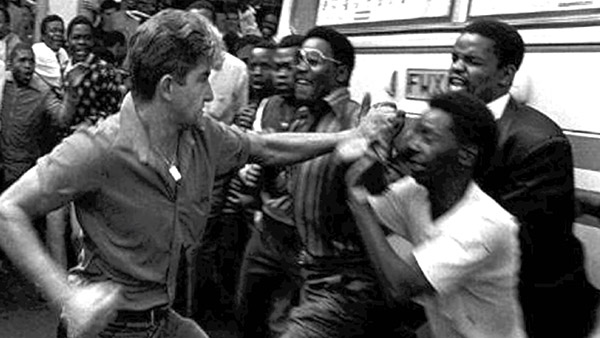
International Controversy
Apartheid brought significant opposition from the International community, caused the rise of social movements, and was highly condemned by the United Nations, who imposed serious arms and trade embargoes on South Africa. Resistance within South Africa was met with brutal crackdowns by the National Party administration, leaving thousands dead and in detention.[14]
3. Nazi Germany(1933 to 1945)
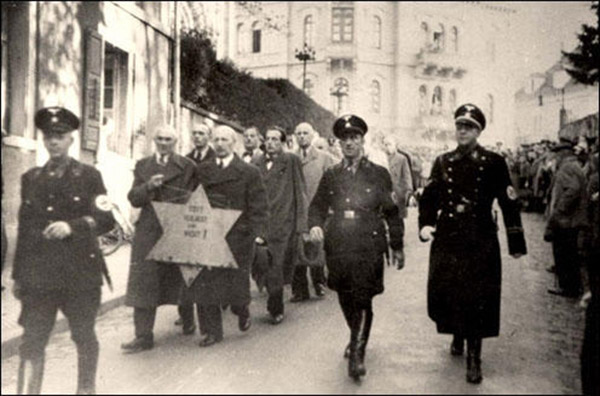
Between 1933 and 1939, Adolph Hitler and Nazi Germany instituted more than 400 decrees and regulations that restricted all aspects of the public and private lives of German ‘Jews’. The extreme use of racism and racist propaganda led to racism’s ultimate and final expression: genocide; the complete elimination of the other, expressed as the murder and elimination of 6 million innocent human beings classified by Nazi legislation as ‘Jews’.
Ideology
Hitler and the Nazi party believed that there existed a superior white “Aryan race” of Northern Europeans, and that Germany’s problems were to be blamed on the inferior ‘races’ living in Germany and in surrounding nations. His ideas came largely from the racial theories of Arthur de Gobineau, a 19th century white supremacist who wrote the book An Essay on the Inequality of the Human ‘Races’, where he argued that wealthy aristocrats were racially superior to commoners.[15] His reasoning came down to the imagined idea that aristocrats had pure Aryan genetics and genetic traits, while commoners had interbred with other inferior “races.” He argued that there are innate differences between humans; dividing people into different human ‘races,’ of which there were three; superior white, inferior yellow and inferior black.[15] He suggested that only in the bible did it say that all humans descended from Adam, but besides this line in the bible, nothing proved that all humans came from the same ancestor, and therefore according to him, only whites descended from Adam (Note: science today has proven that all humans are born from a single unnamed ancestor who lived roughly 100,000 years ago,[16] the human genome project as well as numerous other scientific studies have shown that race itself is not biologically real[17], but rather is only an imagined concept, and that all humans on Earth are very closely related and intermixed, with only small visual differences such as skin color. See: The Case Against Scientific Racism).
Gobineau postulated that since time began, many civilizations were ruined and destined for destruction when the supposed superior white Aryan ‘race’ mixed and bred with other ‘races’ that were supposedly genetically inferior, bringing civilizations lower and lower until their demise. His work was very popular among pro-slavery Americans, who translated his book into English, yet left out the content which negatively described Americans as a mixed ‘race’ population.[15] The Nazi party also idolized his work, republishing his book and making it the basis for their ideology.
Nuremberg Laws
The Nuremberg laws were antisemitic (def.: hostile, prejudiced, and discriminatory towards ‘Jews’[18]) and ‘racial’ laws in Nazi Germany beginning in September of 1935 and lasting until September of 1945. The laws prohibited marriages and intercourse between ‘Jews’ and Germans, forbade employment of young German women under the age of 45 in ‘Jewish’ households, and enacted the Reich Citizenship Law which stated that only those of imagined “German or related blood” were eligible to be Reich citizens; the rest, namely ‘Jews’, were classified as state subjects and were not allowed citizenship rights.[19]
‘Racial’ Classification
The Nazi party could never adequately define a ‘Jew’, as Judaism was a religion and a set of beliefs that led up to Christianity of which anyone could join, yet they attempted to classify those belonging to the Jewish faith by ancestry rather than by beliefs. They claimed anyone who had three or four grandparents who practiced the religion of Judaism would be considered a ‘Jew’ by blood,[19] using alarming inaccuracies in their logic, policies and flawed ways of thinking.[17][20] Generations of Germans who had not practiced Judaism found themselves targeted and caught in the grip of Nazi terror.[21] Newspapers, parades, wall hangings and posters were all installed across Germany to demonize ‘Jews’, depicting ordinary human beings as animals, monsters and fit only for elimination. This brief video shows the gradual degradation of ‘Jews’ by the Nazi party.
Eugenics
Eugenics was an idea implemented by Nazis of eliminating the genetics of humans whom they claimed were “unworthy of life” (German: Lebensunwertes Leben) through forced sterilizations and death by euthanasia, expanding on much of the inhumane eugenics programs that had previously taken place in the United States. Physicians were required by law to report all cases of any citizen who suffered from a list of certain “disorders.”[22] Dissidents, people assumed to have physical and mental disabilities, prisoners, manic-depressed, deaf, blind, homosexual, idle, insane, and people classified as “weak” were all victims of the Nazi eugenic program. More than 400,000 people were, against their will, sterilized and more than 70,000 were put to death, which included the inhumane euthanization of all children with disabilities.[22]
Forcing ‘Jews’ Into Poverty
In 1933, German law restricted the number of ‘Jewish’ students that could attend German schools and universities. A number of laws also restricted ‘Jews’ from practicing law, being tax consultants, and being doctors.[23] Between 1933 and 1938, the Nazi government sought to impoverish ‘Jews’ by preventing them from earning a living. They required ‘Jews’ to register their businesses, properties, and assets, later which would be frozen and acquired by the state and by non-‘Jewish’ Germans. ‘Jewish’ workers and managers were dismissed, and ownership of businesses was forcibly transferred from ‘Jews’ to non-‘Jewish’ Germans for fixed and very cheap prices set by the government. Countless people targeted by Nazis sought to move to other countries, yet nearly every country denied them asylum and entry. The commander of the German police enforced legal measures that forbade ‘Jews’ of possessing any weapons whatsoever, and imposed a penalty of 20 years confinement in a concentration camp for every ‘Jew’ found to possess a weapon.[24]
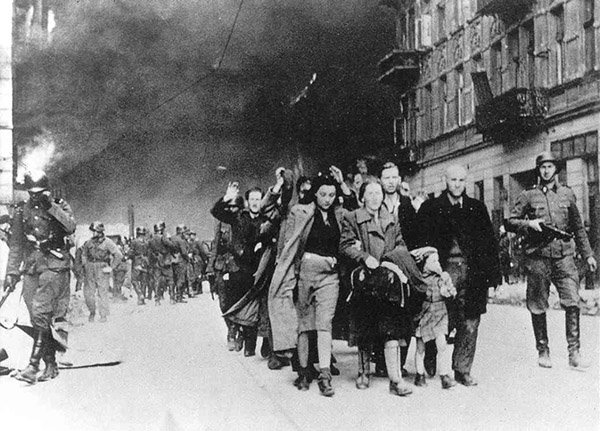
Crystal Night (Kristallnacht) Germany 1938
On November 9 1938, a massive act of vandalism and terrorism took place where SA stormtroopers, German civilians, and German authorities assaulted and murdered hundreds of German ‘Jews’, destroyed and damaged over 7,000 ‘Jewish’ businesses, set fire to Jewish synagogues and arrested and incarcerated 30,000 ‘Jewish’ men in concentration camps.[25] The name Crystal Night (Kristallnacht) comes from the large amounts of broken glass that could be seen littering the streets.
The British newspaper The Times wrote at the time: “No foreign propagandist bent upon blackening Germany before the world could outdo the tale of burnings and beatings, of blackguardly assaults on defenseless and innocent people, which disgraced that country yesterday.”[26]
The Holocaust: The Genocide And Mass Murder Of Millions: The End Result Of Racism Which Is The Complete Elimination Of The Other
The Holocaust was a genocide which took place during World War II, created and carried out by the Nazis of Germany with the help of its allies, who systematically murdered over 6 million innocent people considered to be European ‘Jews’. This was part of a larger Nazi plan in which Nazi Germany sought the extermination and forced slavery of ‘Jews’, Romani ‘Gypsies’, ethnic Poles, “incurably sick,”[27] political opponents, homosexuals, Jehovah’s Witnesses and Soviet prisoners of war.[28]

‘Racial’ laws and Nazi propaganda set the stage for more than 42,000 concentration camps, ghettos and detention sites to be established to house and murder ‘Jews’. Mass shootings, being sealed in train cars, starvation, beatings and gas chambers were the primary means through which the mass killings were carried out.[29]

When Allied Forces invaded Germany at the end of World War II, the Allied military veterans were not prepared to cope with the horrors they encountered during the liberation of the concentration camps. The inhumane conditions and torturous treatment of the prisoners exposed the true cruelty and brutality behind Hitler’s true intentions with the Nazi party. Allied troops found countless survivors, who from abuse, malnourishment, and severe torture were barely able to walk or even move.[30] Tens of thousands of men, women and children were found still barely alive, clinging to life, and tens upon tens of thousands more were found dead, everywhere: mass graves, stacked as firewood, scattered about the surrounding areas, sharing bunks with the living. Gas chambers, rooms used for torture and medical experiments and crematories were all brought to light, revealing the gruesome story of which the dead could not tell. The horrible reality of Hitler’s “Final Solution,” of exterminating the imagined ‘Jewish race’, of innocent men, women and children, was seen by the whole world.

The Holocaust Resource Teacher Center reports;
“Each discovery deeply penetrated the hearts and the minds of the soldiers. Grown men and veterans of battle broke down and wept at the horrors seen in the camps. The pain and suffering felt by the inmates was universal: it superseded any language or ethnic barrier. The prisoners also reacted in many different ways to their liberation. In some camps they ran out to joyously meet their emancipators and to see if their release was true. Others stayed within their living quarters, afraid to come out, like timid animals insecure with their new freedom. Many prisoners took revenge on the captured SS soldiers and still others retreated to their religion. Above all, the inmates had been stripped of their humanity as well as their personal identities, and what remained was merely a shell of a human being. The Allies offered to the survivors what guidance and support they could. The liberators were also deeply moved by the experience. The Allied reactions included tears, horror, denial, patriotism, and hatred for the Nazis, Overall, a cold anger welled up in the Allied troops for the German citizens. As camp after camp was liberated, the civilians insisted that they had not known of the atrocities that lay within. It was obvious, however, that the camp’s stench and the odor of’ the crematories had carried for miles over the countryside.” [31]
These are some of the real reactions American WWII veterans had when liberating the Nazi concentration camps:
World War II Veteran John Glustrom of the 333rd Engineers said,
“My first impression of it was the odor The stench of it was all over the place and there were a bunch of very bewildered, lost individuals who came to me pathetically at the door in their unkempt uniforms to see what we were doing and what was going to be done about them. They were staying at the camp even though their guards and staff had fled because they didn’t know where to go or what to do. They had heard news that the Americans had taken over that area and they were waiting for somebody to turn theirs back straight again and they were just lost souls at that time. Well, my feeling was that this was the most shattering experience of my life.”[31]
“We walked inside and saw these skinny people who were still living, and one of my enlisted men who walked in with me realized they were starving. We had nothing but some candy bars, which we got in a ration, and one of my men gave the candy bar to one of these people who grabbed it and ran away and gulped it down so fast that he became unconscious and probably choked on it when he tried to swallow it before someone took it away from him. These Jewish people and these Polish people were like animals. They were so degraded, there was no goodness, no kindness, nothing of that nature, there was no sharing. If they got a piece of something to eat, they grabbed it and ran away in a corner and fought off anyone who came near them.”
~Samuel Glasshow, liberator of Woebbelin[31]
“[The prisoners] were so thin they didn’t have anything didn’t have any buttocks to lie on; there wasn’t any flesh on their arms to rest their skulls on…one man that I saw there who had died on his knees with his arms and head in a praying position and he was still there, apparently had been for days.”
~William B. Lovelady, Commander of the Task Force of the Third Armored Division and liberator of Nordhausen[31]
“When we walked through those gates…1 saw in front of me the walking dead. There they stood. They were skin and bone. They had skeletal faces with deepset eyes. Their heads had been clean shaved. They were holding each other for stability. I couldn’t understand this. I just couldn’t. So I walked around the camp; I wanted to…understand more. I went to a building where they stored body parts from ‘medical experiments’ in jars of formaldehyde. I saw fingers and eyes and the hearts and genitals. I saw mounds of little children’s clothing. Little children who didn’t survive. I saw.. all of those things that belong to little children. But I never saw a child…. If this could happen here, it could happen anywhere. It could happen to me. . I often wonder what I would have done if in 1939, my family and I had been caught up in this and for all those years nobody, just nobody, would help us. I would have been a bitter man…”
~Leon Ball of the 183rd and liberator of Buchenwald[31]
“Well, after seeing the train and then standing there looking through that fence at these people, you couldn’t believe what you saw. It gave you a lost, sick feeling… Well, it’s haunted me as I say for 36 years. I mean, who are they? What’s their name? What nationality are they? What is their religious faith? Why were they there? You just can’t comprehend it.”
~Henry Dejarnette, liberator of Dachau[31]
“Of all the horrors of the place, the smell, perhaps, was the most startling of all. It was a smell make up of all kinds of odors –human excreta, foul bodily odors, smoldering trash fires, German tobacco — which is a stink in itself — all mixed together in a heavy dank atmosphere, in a thick muddy woods, where little breeze could go. The ground was pulpy throughout the camp, churned to a consistency of warm putty by the milling of thousands of feet, mud mixed with feces and urine. The smell of Gunskirchen nauseated many of the Americans who went there. It was a smell I’ll never forget, completely different from anything I’ve ever encountered. It could almost be seen and hung over the camp like a fog of death. As we entered the camp, the living skeletons still able to walk crowded around us and, though we wanted to drive farther into the place, the milling, pressing crowd wouldn’t let us. It is not an exaggeration to say that almost every inmate was insane with hunger. Just the sight of an American brought cheers, groans, and shrieks. People crowded around to touch an American, to touch the jeep, to kiss our arms — perhaps just to make sure that it was true. The people who couldn’t walk crawled out toward our jeep. Those who couldn’t even crawl propped themselves up on an elbow, and somehow, through all their pain and suffering, revealed through their eyes the gratitude, the joy they felt at the arrival of Americans.”
~Captain J.D. Pletcher,
71st Division at Gunskirchen[31]
This brief video shows some of what American troops encountered:
The following video shows an accurate re-enactment of what U.S. soldiers encountered when entering the nazi concentration camps:
The Holocaust Made Blatant Racism Unfashionable Around The World
The terrors of the Holocaust were something that humanity agreed must never happen again. After bearing witness to the horrors of the Holocaust, racism began to be seen as unfashionable in the United States and also in many nations across the world. As Fredrickson writes, “they taught the world a lesson about the consequences of rampant and unchecked racism that eventually changed the standards for internationally acceptable conduct.”[1] Seeing the devastating effects of the final form of racism; which is the complete abuse and murder of millions of vaguely ‘racially’ defined innocent human beings, brought back feelings and ideas to a post-slavery America that racism was an enemy to the free world.
Many World War II veterans sacrificed their lives in bringing a stop to the Nazi Axis of evil. Surviving World War II veterans who witnessed the tragedy within the concentration camps began to question long-standing ideas of racism towards African Americans within the United States. This helped to speed up progress towards ‘racial’ equality in the U.S. for a time. As most of the WWII veterans have now currently passed away, so have their personal experiences of witnessing the horrors and brutality of racism, and a new generation of Americans is currently left without experience nor public education on the topic of ‘race’, leaving them and America vulnerable yet again to the tremendous dangers of racist ideologies.
When considering and researching how average and ordinary Germans could be capable of committing such cruel and horrendous crimes against humanity, Holocaust survivors and educators concluded that blind obedience to authority and willful ignorance towards the realities of their actions were main factors in how the Nazi genocide was carried out. Separate orders were able to be given out in a chain of command during the Holocaust by Nazi officials, and blind obedience to each part resulted in the construction of Nazi death camps and ‘racial’ genocide. Nazi military members were also made to swear a complete oath of unconditional obedience and loyalty to Hitler himself, allowing perpetrators to somewhat emotionally distance themselves from the responsibility of the crimes they carried out as long as they were “following orders.”[32]
A dangerous culture of obedience pervaded not just the German military, but also German society. Japan, one of Nazi Germany’s allies during World War II, also exhibited this similar excessive obedience to authority within its culture, and to a certain degree continues to do so today. Within the Nazi education system, students were educated with deeply hateful racism in a schooling environment that only accepted absolute obedience. Students did not call their instructors Lehrer, meaning teacher, but rather were made to call them Erzieher, meaning a disciplinarian who commands rather than instructs.
“Never did we question what our teachers said, we simply believed what was crammed into us,” a German teenager in the 1930s Alfons Heck wrote.[33] Being taught to think critically and to question those appearing in authority is a very important aspect for all students and citizens of any civilized society to learn, as harmful, racist and unjust laws should not be followed when dangerous dictators wrestle themselves into positions of political power.
In this brief video, a man who personally saved over 600 children from the holocaust is surprised to find out the entire group around him is those children all grown up.
Reasons As To Why These 3 Specific Societies Developed Into Openly Racist Regimes
While the histories of these three openly racist societies are complex and the cause for their development of racist ideologies can’t be summed up in a single point, there is one very important similarity they all shared which is important to note: all three of these overtly racist regimes identified the ‘racial’ “other” as responsible for both their national defeat in war, and also for the resulting humiliation they experienced.
During the civil war in America, a large advantage was given to the Union when over 200,000 African Americans, the majority of them being newly freed slaves, enlisted in the North’s army to help put an end to slavery.[34] After the Confederacy’s defeat, much of the cause of their humiliation was further blamed on African Americans. Black votes also played a major role during reconstruction, furthering the defeat and humiliation of ex-confederates.
In the South African second Boer War during 1899-1902, British forces were heavily reinforced by native African troops, giving the British a military victory over the Afrikaner republicans.[35] Black Africans became identified as long standing enemies against the will of Afrikaner self-determination.
After Germany’s defeat in World War I in 1918, Adolph Hitler along with other German antisemites blamed their defeat and humiliation on the German Jews.[36]
When understanding how dangerously racist regimes develop, it’s important to understand the connection nationalist defeat can have with blaming ethnic minorities. When looking at the political state of the United States after the first Black President in the country’s history was elected, it signaled a defeat to southern conservatives, whose culture and educational system has deep roots from a pro-slavery confederacy. The following election which put southern conservatives back into power in 2016 was quickly met with numerous forms of backlash related to ‘race.’[37] Conservative news outlets demonized the first Black President, questioned his birthplace based on the color of his skin, and questioned his religion.[38] Within one year of conservative rule in America, residents from countries identified as ‘Muslim’ were banned from immigrating to the United States, and 143,470 arrests targeting people of Mexican descent who may not have valid visas were made.[39] The year prior, many in congress wanted to grant many of these immigrants citizenship as they largely consisted of women and children trying to escape the poverty and crime of Mexico. These are alarming signals that racism is still alive and strongly at work in America, even in the 21st century. The words of holocaust survivors echo today more loudly than ever; “Never let it happen again.”
In this brief video, Charlie Chaplin, known around the world for his famous silent movies, breaks his tradition of silence and gives a powerful speech in his movie The Great Dictator, which condemned the Nazi movement:
The Ku Klux Klan
The Ku Klux Klan (KKK) is a terrorist organization within the United States devoted to attacking and persecuting minorities, especially Americans of African descent. The KKK was originally created in the Southern United States in the late 1860s after the civil war. It sought to overthrow the Union state governments in the South during the Reconstruction Era, especially by using violence against African-American leaders.[40] Over the years it has claimed responsibility for the deaths of countless minorities and African Americans through the use of lynchings. To get a sense of what southern lynchings were like, consider the case of Sam Hose, a farm laborer who was killed through lynching after defending himself against a white man who pulled a gun on him in 1899:
“Local and regional newspapers took over the publicity, promotion, and sale of the event with the kind of sensationalized narrative pattern that would come to dominate the reporting of spectacle lynchings up until the 1940s. ‘Determined Mob After Hose, He Will Be Lynched If Caught,’ began the story in the Atlanta Constitution on April 14, 1899. After the lynching had taken place, another local newspaper printed the details: ‘In the presence of nearly 2000 people, who sent aloft yells of defiance and shouts of joy, Sam Hose was burned at the stake in a public road. Before the torch was applied to the pyre, the Negro was deprived of his ears, fingers, and other portions of his body with surprising fortitude. Before the body was cool, it was cut to pieces, the bones were crushed into small bits and even the tree upon which the wretch met his fate was torn up and disposed of as souvenirs. The Negro’s heart was cut into small pieces, as was also his liver. Those unable to obtain the ghastly relics directly, paid more fortunate possessors extravagant sums for them. Small pieces of bone went for 25 cents and a bit of liver, crisply cooked, for 10 cents.’”[41]
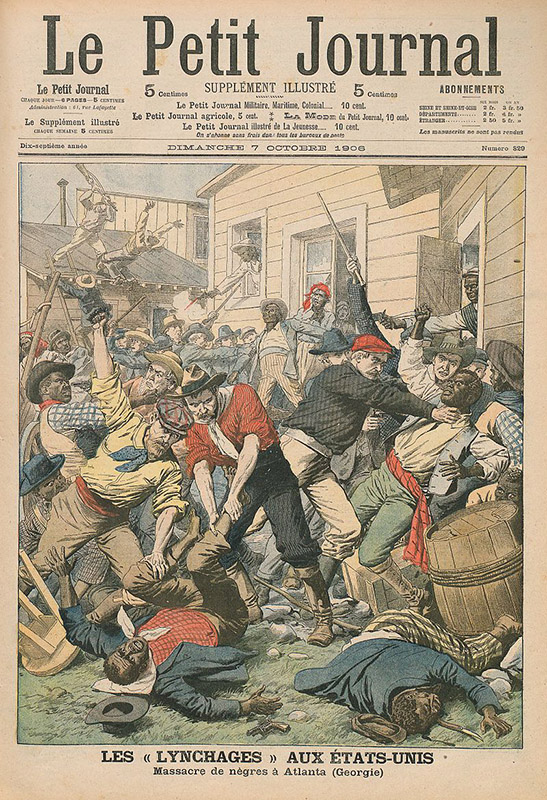
The KKK has maintained its organization in the United States under the guise of freedom of speech, yet the terrorist organization’s purpose is to encourage violence against minorities, which is against the law.
